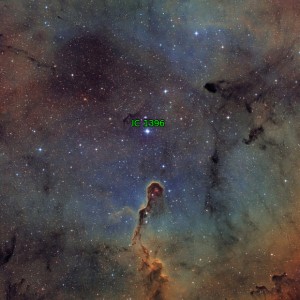The Leonids is an average shower, producing up to 15 meteors per hour at its peak. This shower is unique in that it has a cyclonic peak about every 33 years where hundreds of meteors per hour can be seen. That last of these occurred in 2001. The Leonids is produced by dust grains left behind by comet Tempel-Tuttle, which was discovered in 1865. The shower runs annually from November 6-30. It peaks this year on the night of the 17th and morning of the 18th. The nearly new moon will not be a problem this year. Skies should be dark enough for what should be good show. Best viewing will be from a dark location after midnight. Meteors will radiate from the constellation Leo, but can appear anywhere in the sky.
The Quadrantids meteor shower can yield as many as 40 meteors per hour, radiating from the constellation Bootes. It peaks this year on the night of the 3rd and morning of the 4th. Bummer though: this will occur during a nearly full moon, so all but the brightest meteors will be washed out. Still, looking up at the sky isn’t a bad way to start the new year!
NOVAC’s Byron Bergert Imaging Group will hold its Not-a-Leap-Year Processing Party online on Saturday, February 27 from 10am to 1pm. As our planet’s satellite moves into its springtime prime, when the first-quarter moon will ride high in the sky, this seemed like a good opportunity to take a step sideways from our usual focus on deep sky astrophotography to do a session on lunar imaging. Our Special Guest Processor for this meeting is Tom Glenn, a skilled lunar and planetary photographer who lives in San Diego. You may be familiar with Tom’s work from his fantastic APOD of the International Space Station transiting Mars, but if you look at Tom’s Flickr site you’ll quickly see that he’s equally talented at lunar imaging, and in fact he earned his first APOD for that work. Tom images the moon with a 9.25” Celestron SCT and an ASI183 camera.
We’ll be holding this meeting online via Google Meet. Follow the link below to join the meeting (you can dial in for audio only):
Phone: 414-436-7479
PIN: 891 623 500#
We’ll open the connection about 10 minutes before the meeting time.
Details and Google Meet link TBA.


